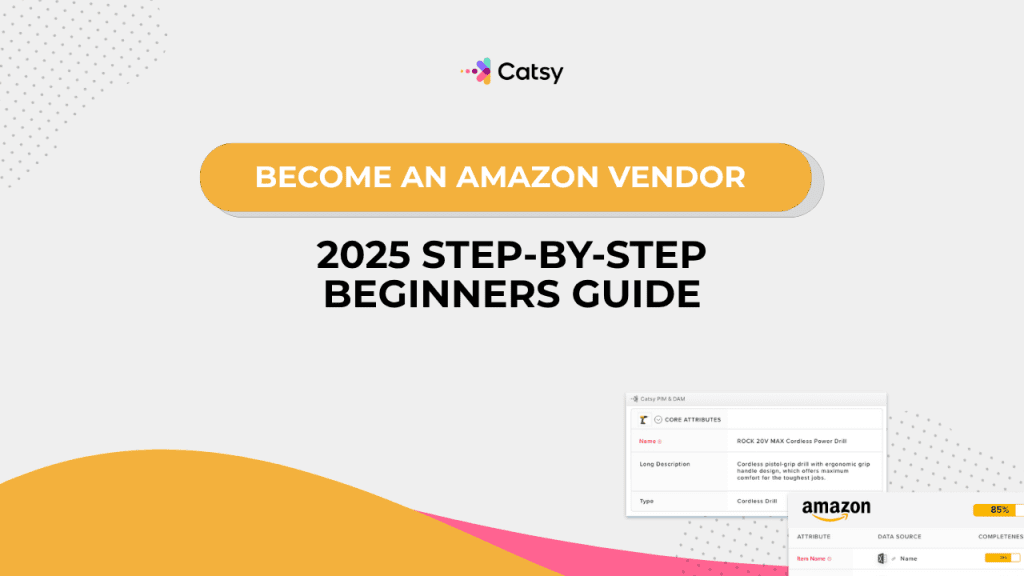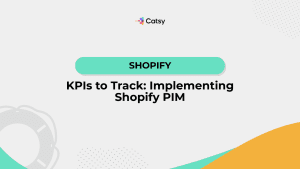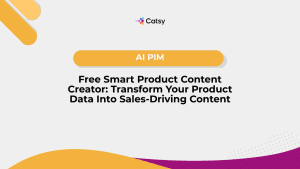How to Become an Amazon Vendor: Step-by-Step Guide for Brands
Alright, let’s get real for a second. Selling on Amazon is one thing, but becoming an Amazon Vendor? That’s a whole new level. It can open doors to big-time exposure, more sales, and even a closer partnership with Amazon itself. But hey, it’s not like signing up with Seller Central. Nope, this one’s a little more exclusive.
So, here’s what I think: if you’ve got a brand with some serious potential, it might be time to look into this. Let me walk you through it, step by step, easy.

What Even Is an Amazon Vendor?
Okay, picture this: instead of selling on Amazon, you sell to Amazon. That’s what being an Amazon Vendor means. You’re basically a supplier. Amazon buys your products at wholesale prices, stores them, and then sells them directly to customers. And your stuff shows up as “Sold by Amazon” (which looks super legit, by the way).
You manage everything through a platform called Vendor Central. But here’s the catch, you can’t just sign up. You need an invite. I know, right? VIP vibes.
In this Article
Vendor Central vs. Seller Central – What’s the Deal?
hey’re actually really different.
With Vendor Central:
- Amazon sells your stuff. They buy it from you first.
- They control the pricing.
- It’s invite-only. You can’t just waltz in.
- Amazon handles all the fulfillment stuff.
- Products are listed under Amazon’s name.
With Seller Central:
- You sell directly to customers.
- You pick your prices.
- Anyone can sign up.
- You can choose Fulfilled by Amazon (FBA) or do it yourself (FBM).
- Products are listed under your brand.
So yeah, Vendor Central is more like wholesale, while Seller Central is more like direct-to-consumer. Big brands love Vendor Central because it saves them time and gives them access to some fancy tools.
Why Even Bother Becoming an Amazon Vendor?
Well, let me tell you, there are some sweet perks:
- That “Sold by Amazon” label? People trust it.
- Amazon sends you bulk orders, you ship, they handle the rest.
- You get access to cool stuff like A+ Content.
- Real-time retail analytics (super helpful).
- Chance to join big promos like Prime Day.
- Better shot at winning the Buy Box.
Sounds good, right? But there’s more to it…
Make Catsy DAM and PIM Software an Extension of Your Team
Book a Free DemoWait, Am I Even Eligible?
That is definitely something you need to check out first. Unfortunately for some, Amazon doesn’t let just anyone in. There are a few criteria you’ll need to pass:
A strong brand or product line
You won’t believe this, but Amazon isn’t looking for just anyone selling candles from their kitchen (no offense if you are, keep going!). They want brands that already have some buzz. So, if people recognize your name, your products get great reviews, or you’ve been featured on social or in media, boom, you’re in a better spot.
What do you think, does your brand turn heads yet? If not, start by making your listings and packaging look professional and consistent across all your channels.
Enough inventory to sell in bulk
Here’s the deal, Amazon doesn’t want 10 mugs, they want 1,000. Can you imagine that? One day you’re packing single orders, next thing you know, Amazon’s asking for pallets.
So, you’ll need to have the inventory (or a way to produce it quickly) to handle big purchase orders. Not just once, but consistently. If you’re used to small batches, it might be time to scale up a little.
Professional packaging and labels
Okay, this one’s huge. Your product can’t just be good, it has to look good too. Amazon expects retail-ready packaging. That means barcodes, safety labels, product info, and the whole shebang.
Think about it: would you grab a plain, unmarked bag off a shelf? Probably not. So make sure your packaging screams “pro,” not “homemade craft fair.”
A registered business
Yup, this one’s non-negotiable. You need to have a legit, registered business to even be considered. No side hustles under the table here.
Why? Because you’ll be signing contracts, sending invoices, and dealing with taxes. Amazon’s gonna want all your info upfront, like your business number, banking details, and tax ID. So if you haven’t set that up yet, that’s your next move.
The ability to ship and meet Amazon’s timelines
So, Amazon’s got a rep for being super strict with logistics. When they place an order, they expect it on time, every time. No excuses.
That means you need a reliable shipping setup. Whether it’s you, a 3PL, or a warehouse partner, make sure whoever’s doing the shipping can handle volume and speed.
After that, you’ll want to keep an eye on delivery windows and lead times, because Amazon definitely will. Miss too many deadlines and… yeah, not good.
Basically, they want to see that you’re ready to play in the big leagues.
So, How Do You Actually Become a Vendor?
Now this part’s kinda hush-hush. There’s no “Apply Now” button. Here’s how it usually goes:
- Amazon discovers you. Maybe through Seller Central, maybe at a trade show.
- They reach out. A Vendor Manager sends you an invite.
- You say yes (duh). Then you set up your Vendor Central account.
- POs start rolling in. That means purchase orders, bulk ones.
Can you imagine that? One day you’re selling one by one, the next day Amazon’s asking for a hundred units.
Want to Boost Your Chances of Getting Invited?
Here are a few tricks to get on Amazon’s radar:
- Build a killer brand with high demand.
- Go to trade shows like CES or Toy Fair (Amazon scouts there!).
- Polish up your product listings on Seller Central.
- Make sure your packaging looks retail-ready.
- Highlight what makes you unique, think patents, special ingredients, or loyal fans.
- Reach out to Amazon directly or through LinkedIn.
What do you think? Not too bad, right?
What Happens After the Invite?
Alright, so you’re in! Now what?
Next, you do the onboarding stuff:
- Add your tax and bank info
- Upload your product catalog
- Provide compliance docs
- Sign retail agreements
Then, Amazon starts sending you purchase orders.
After that, you ship your products in bulk.
Finally, Amazon sells your products and you get paid. Easy.
Quick Tips to Get Ahead
So, want to really wow Amazon and boost your chances of getting that golden Vendor Central invite? Here’s what I think, you’ve gotta show them you’re not just any brand. You’re the real deal. Let’s make you look extra impressive, shall we?
First off, show off your media coverage and influencer shoutouts. Been featured in a magazine? Had a TikTok go viral? Maybe a skincare influencer gave your product a glowing review? Don’t be shy, flex that! Amazon loves seeing that your brand already has buzz and trust.
Next, share your wins on other platforms. Are you already selling on Target, Walmart, or another major retailer? That’s huge! It shows that you’re retail-ready and know how to play in bigger markets. Mention it loud and proud.
Keep those Amazon Seller ratings high. If you’re still selling through Seller Central, this is super important. Great reviews, on-time shipping, and happy customers, it all builds trust. Think of it like your report card for Amazon to see how reliable you are.
Be active in your category’s community. Whether that’s joining Facebook groups, attending industry events, or engaging on Reddit, just show that you’re involved. It helps position you as a leader, not just another brand.
And finally, stay consistent with your marketing. Whether it’s posting regularly on social media, keeping your branding on point, or running ads, just keep showing up. A strong, steady presence tells Amazon you’re in this for the long haul.
So yeah, polish up your public presence, brag a little (you’ve earned it), and let Amazon see why you’re worth the invite. What do you think, ready to stand out?
What Does ‘Retail-Ready’ Even Mean?
If you’re gonna be an Amazon Vendor, your stuff needs to be 100% retail-ready. That means:
- UPC/EAN codes (GS1 certified!)
- Retail packaging with all the right labels
- Safe and secure shipping setup
- Product liability insurance (yep, that too)
- Extra certifications if needed (like for toys, food, etc.)
Basically, Amazon wants everything to go smoothly.
Watch Out for These Tricky Bits
Okay, so here’s the thing, Vendor Central kinda has this rep for being, well, a little strict. You know how Amazon runs a tight ship, right? Let me break down some of the pain points you might run into, so you’re not caught off guard.
First up, you lose control of pricing. Yup, Amazon calls the shots here. That means they decide how much your products sell for, not you. Can you imagine? One minute you’re setting your prices, the next, you’re just along for the ride. It can be a little nerve-wracking if you’re used to having full control.
Then, there’s a ton of operational work. Sounds ironic, since they handle fulfillment, but actually, managing Vendor Central means dealing with lots of paperwork, compliance stuff, and keeping your product info super sharp. It’s not just shipping boxes; it’s a whole system to stay on top of.
Another thing? Orders can be unpredictable. One week Amazon might want a ton of your product, and the next? Crickets. That can make planning your production and inventory a bit tricky. You’ve gotta be ready for the rollercoaster.
Also, you get not much freedom in marketing. Unlike Seller Central, where you can run your own promos or play with pricing, here Amazon controls most of the marketing game. So if you like being hands-on with campaigns, this might feel a bit limiting.
And finally, there’s bulk pricing cutting into your margins. Since you’re selling wholesale to Amazon, you’re giving them a discount upfront. That means your profit per item might be slimmer than selling directly to customers. It’s the trade-off for a bigger volume and less hassle on fulfillment.
But hey, don’t let all this scare you. If you’re prepared, organized, and know what to expect, you can totally manage these challenges. It’s just part of playing in the big leagues! What do you think, ready to take it on?
Want an Easier Life? Get a PIM & DAM
Here’s the secret sauce. Tools like PIM (Product Information Management) and DAM (Digital Asset Management) can seriously save your sanity.
PIM:
- Keeps all your product info in one place
- Reduces mistakes
- Makes uploading to Amazon super smooth
DAM:
- Stores all your images, videos, and docs
- Helps you stay on brand
- Supports things like A+ Content
With tools like Catsy, you can speed up onboarding, avoid errors, and really polish your Amazon game.
Final Thoughts
So there you have it. Becoming an Amazon Vendor might feel a bit mysterious, but it’s not rocket science. Build a great brand, be consistent, and keep your stuff retail-ready.
Need help with content, onboarding, or compliance? Catsy’s got your back. Our PIM and DAM tools make everything easier, from setup to sales.
Ready to take the leap?
Want more tips, tutorials, and insights on product content and e-commerce operations?
Stay connected. We post regularly to help brands like yours scale smarter.
Are You Ready To streamline your product content management?
Continue Reading

Frequently Asked Questions
Nope. It’s invite-only. There’s no official signup form. But if your brand is strong and you’re getting traction on Seller Central, Amazon might notice. You can also reach out to Vendor Managers or network at trade shows.
It varies. If you’re organized and send in all your tax info, product catalogs, and compliance docs quickly, it can take just a few weeks. But delays can happen if paperwork is missing or packaging needs adjustments.
Not really. With Vendor Central, you ship in bulk to Amazon, and they take care of customer fulfillment. Think pallets instead of packages. It’s less hands-on day-to-day, but you still need to manage inventory and logistics on your end.
It depends. If you’re just starting out or can’t handle large orders, Vendor Central might be too much. But if you’ve got a strong brand, plenty of stock, and want that “Sold by Amazon” badge, it could be worth aiming for.
Unfortunately, no. Amazon sets the retail price once they buy your products. This can be frustrating for brands who want pricing consistency across platforms.
It means your products need to be fully prepped for store shelves. That includes barcodes (GS1), professional packaging, safety labels, liability insurance, and any category-specific certifications. Amazon expects everything to be ready to sell immediately.
A PIM (Product Information Management) system and a DAM (Digital Asset Management) platform are lifesavers. They organize all your product data and media in one place. Tools like Catsy make onboarding faster, reduce errors, and keep your listings looking polished.
Subscribe For More Content
Sign up for monthly tips on how to drive revenue with product content.




